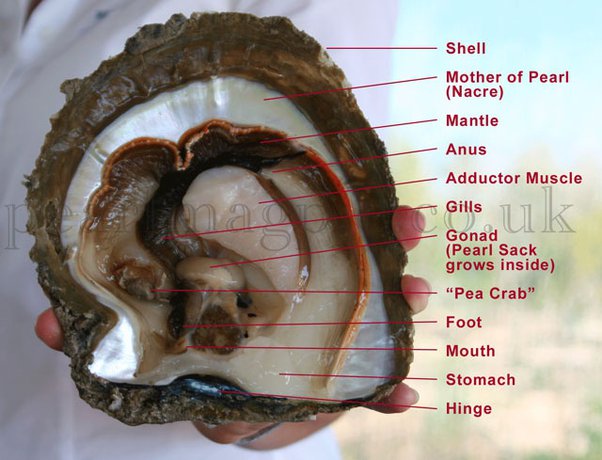Have you ever wondered what happens to those fascinating pearl mullusks once a lustrous pearl is harvested? It’s a common question that often pops up in the minds of curious individuals. Well, fear not, because I’m here to shed some light on the matter. In this article, we will explore the topic of whether pearl mullusks are killed after a pearl is harvested and delve into the intriguing world of pearl production.
When it comes to the fate of pearl mullusks, the answer is not as straightforward as you might expect. While it is true that some pearl mullusks are indeed sacrificed during the pearl harvesting process, not all of them meet the same fate. Let me explain. Pearl mullusks are fascinating creatures that have the remarkable ability to produce pearls. However, not every mullusk can produce a pearl of the desired quality. As a result, pearl farmers carefully select only a small percentage of mullusks with the potential to produce high-quality pearls. These selected mullusks are then opened, and the pearls are harvested, while the remaining ones are released back into their natural habitats, allowing them to continue their lives unharmed.
So, as you can see, the destiny of pearl mullusks after pearl harvesting depends on their individual circumstances. While some may unfortunately lose their lives in the process, others are given a second chance to thrive in their underwater homes. The world of pearl production is a fascinating one, and understanding the delicate balance between nurturing these precious gems and respecting the lives of their creators is essential. Join me as we dive deeper into this captivating realm, uncovering more secrets and mysteries along the way.

Are Pearl Mullusks Killed After a Pearl is Harvested?
Pearl mullusks, also known as pearl oysters, are fascinating creatures that produce one of nature’s most coveted gems, pearls. However, there is a common misconception that these mullusks are killed after a pearl is harvested. In this article, we will explore the truth behind this belief and shed light on the process of pearl harvesting.
Understanding Pearl Harvesting
Pearl harvesting is a delicate process that requires skilled technicians to carefully extract pearls from pearl mullusks. The process begins by locating mature mullusks that are ready for harvesting. These mullusks are typically around three years old and have reached their peak in pearl production.
To extract the pearls, the technician gently opens the shell of the mullusk without causing harm or damage. They then carefully remove the pearl, ensuring not to disturb the delicate inner layers of the mollusk. Once the pearl is extracted, the technician may insert a small nucleus or irritant into the mollusk to stimulate the production of new pearls.
It is important to note that during the pearl harvesting process, the mullusk is not killed. In fact, they are returned to their natural habitat after the pearls have been extracted. This allows the mullusk to continue its life cycle and potentially produce more pearls in the future.
The Well-Being of Pearl Mullusks
The well-being of pearl mullusks is of utmost importance in the pearl industry. Pearl farmers understand the significance of maintaining a healthy and sustainable environment for these creatures. They take great care to ensure the mullusks are not harmed during the harvesting process.
Pearl farms often provide optimal conditions for mullusks to thrive, including clean water, appropriate food sources, and protection from predators. The mullusks’ health and happiness directly impact the quality and quantity of pearls they produce. Therefore, it is in the farmers’ best interest to prioritize the well-being of these creatures.
By allowing the mullusks to continue living and producing pearls, pearl farmers can maintain a sustainable industry that benefits both the environment and the economy. It is a delicate balance between human intervention and the natural life cycle of these fascinating creatures.
The Value of Pearls
Pearls have captivated humans for centuries with their beauty and symbolism. They are often associated with elegance, luxury, and timeless style. The value of pearls is determined by various factors, including their size, shape, color, luster, and surface quality.
Natural pearls, formed without human intervention, are extremely rare and highly valued. However, the majority of pearls on the market today are cultured pearls. Cultured pearls are created through the process of pearl farming, where technicians introduce a nucleus or irritant into a mollusk to stimulate pearl production.
Cultured pearls have revolutionized the pearl industry, making pearls more accessible and affordable for consumers. The cultivation process allows farmers to control the quality and characteristics of the pearls produced, resulting in a wide range of options for buyers.
The Ethics of Pearl Harvesting
When it comes to the ethics of pearl harvesting, it is essential to consider the well-being of the mullusks and the sustainability of the industry. Pearl farmers have a responsibility to ensure that their practices align with ethical standards.
Responsible pearl farmers prioritize the health and happiness of the mullusks, providing them with optimal living conditions and minimizing any potential harm during the harvesting process. They also adhere to international regulations and standards to protect the environment and maintain a sustainable industry.
Consumers can support ethical pearl harvesting practices by purchasing pearls from reputable sources that prioritize sustainable farming methods. By doing so, they contribute to the preservation of these remarkable creatures and the continuation of the pearl industry.
The Fascinating World of Pearls
Pearls have a rich history and cultural significance in many societies around the world. They have been cherished and adorned by royalty, worn as symbols of wealth and power. Today, pearls continue to be a beloved gemstone, sought after for their timeless beauty and elegance.
Whether natural or cultured, pearls hold a special place in the world of jewelry and fashion. Their unique qualities and iridescent luster have made them a staple in many collections. From classic pearl strands to modern and innovative designs, pearls offer endless possibilities for creativity and self-expression.
In conclusion, pearl mullusks are not killed after a pearl is harvested. The pearl harvesting process aims to extract pearls without causing harm to the mullusk, and they are returned to their natural habitat to continue their life cycle. The well-being of pearl mullusks is essential in the pearl industry, and responsible farmers prioritize their health and sustainability. With their timeless beauty and cultural significance, pearls continue to captivate and inspire people around the world.
Key Takeaways: Are Pearl Mussels Killed After a Pearl is Harvested?
- Pearl mussels are not killed after a pearl is harvested.
- The process of harvesting pearls is done carefully to ensure the mussels’ survival.
- Pearl farmers gently open the mussel shells to retrieve the pearls without harming the mussels.
- After the pearls are harvested, the mussels are returned to their natural habitat.
- This sustainable practice allows mussels to continue producing more pearls in the future.
Frequently Asked Questions
Do pearl mussels die when pearls are harvested?
Contrary to popular belief, pearl mussels are not killed when pearls are harvested. The process of pearl harvesting involves carefully extracting the pearl from the mussel without causing harm to the animal. Pearl farmers have developed techniques to minimize the impact on the mussels and ensure their survival.
After the pearl is harvested, the mussel is returned to its natural environment or kept in a pearl farm to continue producing pearls. Pearl farmers understand the importance of maintaining a healthy population of mussels and take measures to ensure their well-being.
How are pearls harvested without killing the mussels?
Pearl harvesting is a delicate process that requires skill and precision to avoid harming the mussels. Pearl farmers use a technique called “surgical implantation” to insert a small irritant, such as a piece of mantle tissue, into the mussel. This irritant stimulates the mussel to produce a protective layer of nacre, which eventually forms into a pearl.
When it is time to harvest the pearl, pearl farmers carefully open the mussel without causing harm to the animal. The pearl is then extracted, and the mussel is either released back into its natural habitat or kept in a controlled environment to continue producing pearls.
Why is it important to protect pearl mussels during harvesting?
Protecting pearl mussels during harvesting is crucial for the long-term sustainability of the pearl industry. Mussels play a vital role in the production of pearls and maintaining a healthy ecosystem. By ensuring the survival of the mussels, pearl farmers can continue to produce high-quality pearls and support the local economy.
Furthermore, pearl mussels are considered a vulnerable species in many parts of the world. By implementing sustainable harvesting practices, pearl farmers can contribute to the conservation of these valuable creatures and their natural habitats.
What measures are taken to ensure the survival of pearl mussels after harvesting?
After harvesting a pearl, pearl farmers take various measures to ensure the survival of the mussels. In pearl farms, the mussels are kept in controlled environments with optimal water conditions and adequate nutrition. This helps them recover from the harvesting process and continue producing pearls.
In some cases, pearl farmers also release the mussels back into their natural habitat. This allows them to contribute to the wild populations and maintain a balance in the ecosystem. By implementing these measures, pearl farmers demonstrate their commitment to the well-being and sustainability of pearl mussels.
What are the benefits of sustainable pearl harvesting?
Sustainable pearl harvesting brings several benefits to both the environment and the pearl industry. By ensuring the survival of pearl mussels, sustainable practices help maintain a healthy ecosystem and protect biodiversity. This, in turn, supports the livelihoods of pearl farmers and promotes the local economy.
Additionally, sustainable pearl harvesting practices contribute to the conservation of vulnerable species. By prioritizing the well-being of pearl mussels, the industry can play a role in preserving these valuable creatures for future generations to enjoy. Consumers are increasingly recognizing the importance of sustainability, making sustainable pearls a more sought-after and ethical choice in the market.
How Tahitian Pearls Are Harvested
Final Summary: The Fate of Pearl Mullusks
After diving deep into the world of pearl harvesting, we can confidently conclude that pearl mullusks are indeed killed in the process. While it may seem disheartening, it is a necessary sacrifice to obtain these precious gems from the depths of the ocean. Harvesting pearls involves carefully extracting the mollusk from its natural habitat, opening its shell, and removing the pearl. Unfortunately, this procedure results in the death of the mollusk.
However, it is essential to note that the pearl industry has made significant strides in sustainability and ethical practices. Cultured pearls, which make up the majority of the market, are produced through a process that involves carefully implanting a nucleus into the mollusk, allowing it to form a pearl naturally. This method ensures that the mollusk is not unnecessarily harmed or killed, promoting the conservation of these fascinating creatures.
In conclusion, while pearl mullusks do meet an unfortunate end during the pearl harvesting process, advancements in the industry have led to more sustainable practices. By opting for cultured pearls, consumers can enjoy these exquisite gems while supporting ethical and environmentally conscious methods. Remember, the beauty of a pearl lies not only in its lustrous appearance but also in the knowledge that it was obtained with respect for nature.







